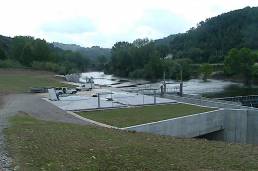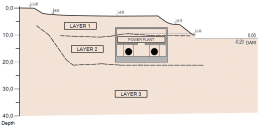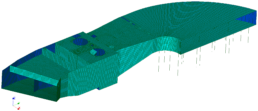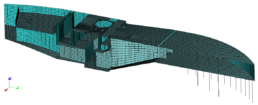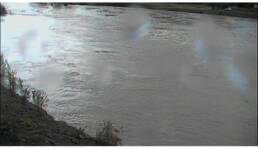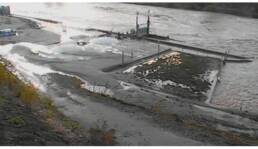The project
The design was particularly challenging due to the considerable hydraulic loads generated by the 200 years hydrological event(water level at 7m above plant roof) in combination with an unbalanced soil lateral soil pressure. In addition, the main structure, 13 m embedded into the ground, is crossing three terrain layers very different from a geotechnical point of view.
Solution
The entire structure was modeled with a thick shell F.E. model. Three main bodies were identified: inlet structure, main central structure and outlet structure. Due to the very different geological unit crossed, recourse to piles has been necessary for the inlet structure, which was resting on the softer layer. The three bodies were separated by special sealed joints, allowing for a certain degree of relative movement.
The soil structure interaction was taken into account under the whole extent of the numerical model. In particular, for the central body and for the outlet structure a nonlinear spring bed was used to include the soil stiffness. In the case of the inlet structure, a mixed solution with a foundation pile under each single column supporting the roofing slab was adopted. This enabled the load transfer from the column directly to the lower stiff layer (gravels). The slab between the piles was modeled on a spring bed, leading thus to a mixed type system.
Design
The numerical method has been used to analyze the internal forces in the concrete structures and for the calculation of the reinforcement content. In this case an ad-hoc algorithm has been created to check the concrete cross sections according to the Italian regulation NTC 2008 and for its optimization. The model was therefore ran several times in an iterative process aimed to reduce the material content while maintaining the necessary structural safety level.
Extreme event
Recently an extreme hydrological event occurred in the basin of the Arno river, which lead to very high water levels in the channel. The structures of the power plant experienced a large hydraulic load after being submerged for several hours, showing excellent capacity.
